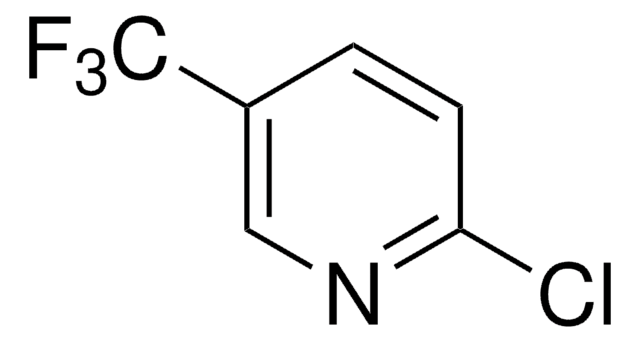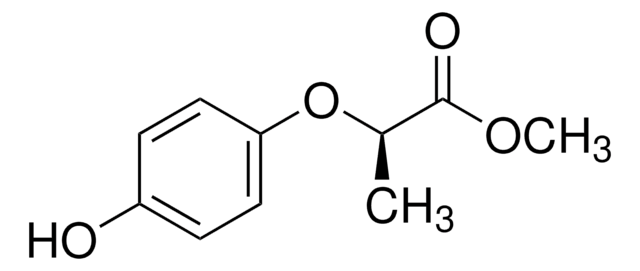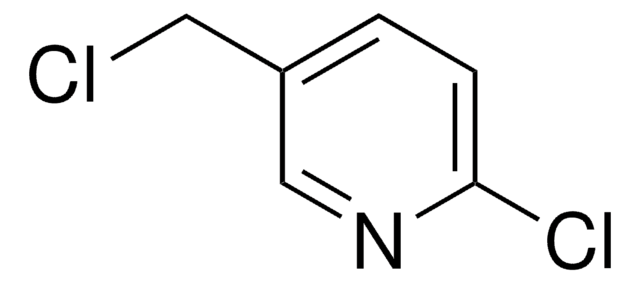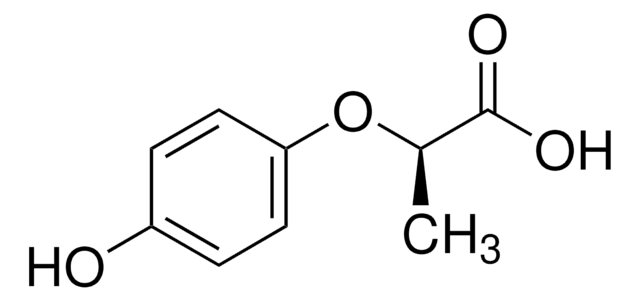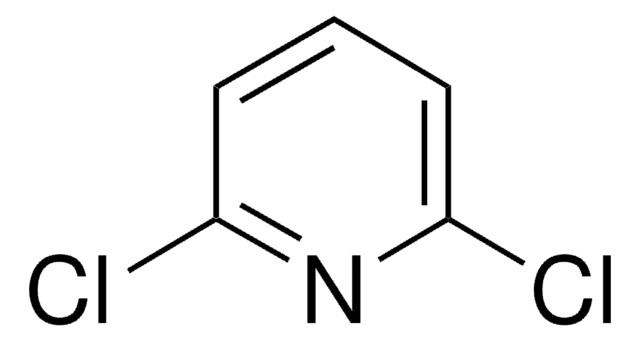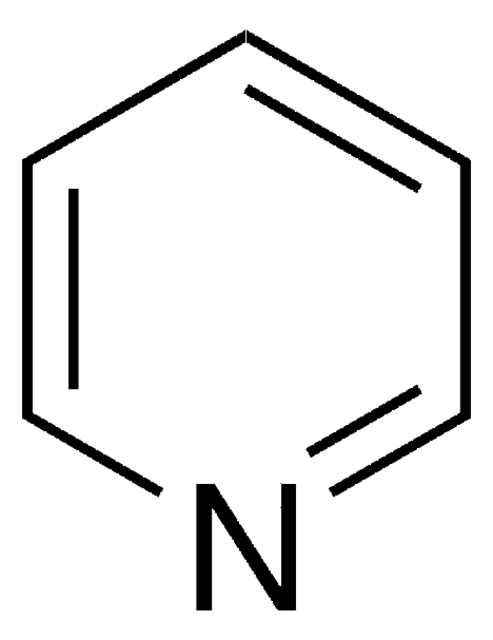All Photos(1)
About This Item
Empirical Formula (Hill Notation):
C6H2Cl2F3N
CAS Number:
Molecular Weight:
215.99
EC Number:
MDL number:
UNSPSC Code:
12352100
PubChem Substance ID:
NACRES:
NA.22
Recommended Products
Assay
97%
form
liquid
refractive index
n20/D 1.475 (lit.)
bp
80 °C/20 mmHg (lit.)
density
1.549 g/mL at 25 °C (lit.)
functional group
chloro
fluoro
SMILES string
FC(F)(F)c1cnc(Cl)c(Cl)c1
InChI
1S/C6H2Cl2F3N/c7-4-1-3(6(9,10)11)2-12-5(4)8/h1-2H
InChI key
ABNQGNFVSFKJGI-UHFFFAOYSA-N
General description
2,3-Dichloro-5-(trifluoromethyl)pyridine is reported as an intermediate of herbicide. Synthesis of 2,3-dichloro-5-(trifluoromethyl)pyridine has been reported. Palladium-catalyzed monoalkoxycarbonylation of 2,3-dichloro-5-(trifluoromethyl)pyridine has been reported.
Signal Word
Danger
Hazard Statements
Precautionary Statements
Hazard Classifications
Acute Tox. 4 Inhalation - Acute Tox. 4 Oral - Aquatic Chronic 2 - Eye Dam. 1 - Skin Sens. 1
Storage Class Code
10 - Combustible liquids
WGK
WGK 3
Flash Point(F)
174.2 °F - closed cup
Flash Point(C)
79 °C - closed cup
Personal Protective Equipment
dust mask type N95 (US), Eyeshields, Gloves
Regulatory Information
新产品
Choose from one of the most recent versions:
Already Own This Product?
Find documentation for the products that you have recently purchased in the Document Library.
Synthetic process development and scale up of palladium-catalyzed alkoxycarbonylation of chloropyridines.
Crettaz R, et al.
Organic Process Research & Development, 5(6), 572-574 (2001)
Research development of 2, 3-dichloro-5-trifluoromethyl-pyridine [J].
ZHAO W-K, et al.
Chemical Reagents, 6, 005-005 (2004)
Yong Xie et al.
Pest management science, 74(1), 189-199 (2017-08-02)
Agrochemicals have been crucial to the production of food, and the need for the development of novel agrochemicals continues unceasing owing to the loss of existing produces via the growth of resistance and the desire for products with more propitious
Our team of scientists has experience in all areas of research including Life Science, Material Science, Chemical Synthesis, Chromatography, Analytical and many others.
Contact Technical Service